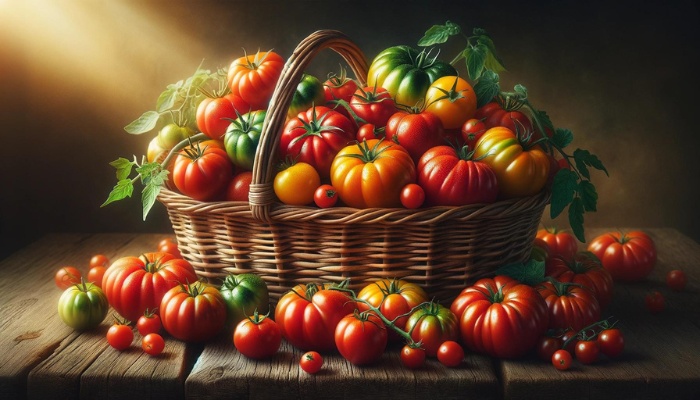In a well-documented case, a single hydroponic tomato plant produced over 200 fruits in a season, showcasing the potential of these systems.
As you venture into hydroponic gardening, it’s important to understand that factors such as nutrient mix, light exposure, and plant variety can influence your yield.
However, having a rough idea of the harvest size you can expect can help you plan your hydroponic garden effectively.
Understanding Hydroponic Systems
Hydroponic systems, a cornerstone of modern agriculture, use a soilless cultivation method to grow plants, including tomatoes, by supplying nutrients directly through water.
You’ll find that understanding the various system types and the composition of nutrient solutions is pivotal for optimizing yields.
When speaking of system types, we’re primarily focusing on Wick, Deep Water Culture (DWC), Nutrient Film Technique (NFT), Ebb and Flow, and Aeroponics.
Each system has a unique mechanism for delivering nutrient-rich solutions to the plants. For instance, DWC immerses roots in nutrient-dense water, enabling direct uptake while NFT channels a thin film of nutrients over the roots.
Your choice of system impacts your control over nutrient delivery and oxygenation, directly influencing plant growth and yield.
Precision is key in nutrient solutions. The solution must be tailored to provide a balanced mix of macronutrients like nitrogen, phosphorus, and potassium, along with essential micronutrients.
The pH and electrical conductivity of the solution should be carefully monitored and adjusted to ensure optimal nutrient uptake.
This technical and analytical approach to managing system types and nutrient solutions sets the foundation for achieving high hydroponic tomato yields.
Factors Influencing Yield
Successful hydroponic tomato cultivation hinges on precise climate control and effective nutrient management. These elements are not just supportive; they’re foundational to achieving optimal yields.
| Factor | Impact on Yield |
|---|---|
| Climate control | Ensures optimal temperature, humidity, and CO2 levels |
| Nutrient management | Provides essential minerals and nutrients |
| Light exposure | Maximizes photosynthesis |
| Plant genetics | Influences plant vigor and fruit size |
Climate control isn’t just about keeping temperatures within a specific range; it’s about understanding the nuanced needs of your tomato plants at different growth stages.
Similarly, nutrient management goes beyond feeding your plants. It’s about delivering the right nutrients in the right amounts and at the right time to support every stage of growth.
Average Yield Estimates
Understanding average yield estimates is important for optimizing your hydroponic tomato production as it allows you to set realistic targets and measure performance against industry benchmarks.
The yield per plant can vary widely due to factors such as variety, nutrient management, and light exposure. However, here are some benchmarks to guide your expectations:
- Small Cherry Varieties: These can produce 10 to 20 pounds of fruit per plant over a season.
- Larger Beefsteak Varieties: Expect around 15 to 25 pounds per plant, depending on optimal nutrient and light management.
- Standard Salad Tomatoes: These typically yield about 20 to 30 pounds per plant in a well-managed hydroponic system.
- Heirloom Varieties: Due to their diverse genetics, yields can vary significantly but generally fall within a range of 10 to 15 pounds per plant.
Maximizing Your Harvest
To maximize your hydroponic tomato yields, it’s critical to focus on optimizing plant nutrition and lighting conditions.
Precise management of nutrient concentration and ensuring adequate plant spacing are key. These factors directly influence the health and productivity of your plants.
- Plant spacing: Ensures adequate light and airflow, reducing competition and disease risk.
- Nutrient concentration: Optimal levels promote vigorous growth and fruit development.
Proper plant spacing prevents overcrowding, enabling each tomato plant to receive sufficient light, which is essential for photosynthesis and overall plant vigor.
It also facilitates better air circulation, reducing the risk of diseases that can devastate your crop.
Nutrient concentration in your hydroponic solution must be precisely managed. Tomatoes have specific nutritional needs that vary through their growth stages.
An ideal nutrient solution supports root health, vegetative growth, and fruiting. Overconcentration can lead to nutrient burn, while underconcentration can starve the plants, both drastically reducing yields.
Common Challenges and Solutions
While optimizing plant nutrition and lighting conditions lays a foundation for high yields, addressing common challenges in hydroponic tomato cultivation is essential for ensuring robust growth and productivity.
Here are four pivotal issues you’ll likely encounter, along with strategic solutions:
- Pest Management: Despite a controlled environment, pests can infiltrate and harm your plants. Implementing integrated pest management (IPM) principles, such as introducing beneficial insects and applying organic pesticides sparingly, can mitigate these risks.
- Nutrient Imbalances: Precise control over nutrient solutions is paramount, yet imbalances occur. Regular monitoring and adjusting of pH and electrical conductivity (EC) levels can prevent nutrient deficiencies or toxicities, ensuring optimal plant health.
- Root Diseases: Hydroponic systems can be breeding grounds for root pathogens if not carefully managed. Utilize sterile growing media, and consider adding beneficial microorganisms to outcompete harmful pathogens.
- Lighting Inefficiencies: Inadequate or excessive lighting can stunt growth or cause stress. Employing adjustable LED grow lights, you can tailor the spectral output and intensity to meet the specific needs of your tomato plants during different growth stages.

